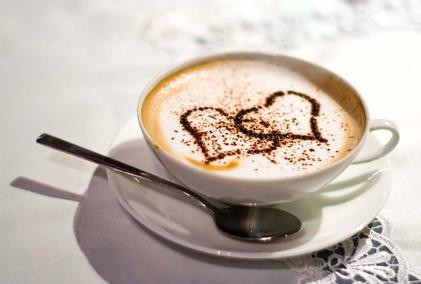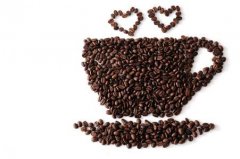Basic knowledge of Coffee Culture around the World

Local coffee culture each coffee country has its own specific coffee culture and drinking methods.
The United States: no taboos American style Americans drink coffee, like playing a game without rules, laissez-faire, no taboos. Americans are dismissive of all kinds of exquisite coffee made by Europeans. Americans drink coffee freely, and at the same time, coffee goes deep into their lives and is difficult to separate, and the influence is so deep that it is not considered a life without coffee. It is said that the Apollo 13 spaceship, which carried a man to the moon for the first time, had a life-and-death failure on its way home. At that time, the ground crew comforted the three astronauts with a word: come on! Delicious hot coffee is waiting for your return. Americans can't do without coffee almost 24 hours a day, whether at home, in the office, in public, or at a roadside vending machine. This consumes 1/3 of the world's coffee production and is the country with the largest coffee consumption in the world.
Generally speaking, life in the United States is relatively busy and tense, unlike people in Europe and the Middle East who are able to enjoy life in a leisurely mood. When drinking coffee, it is often a large pot of electrothermal filtered coffee (Drip Coffee Marker). From morning to night, because there is too much water and less coffee (10 grams of coffee in a cup of water to 200 cc of water), the taste is particularly weak, so many people criticize that American coffee is really bad. In fact, in all parts of the United States, coffee lovers can still taste their favorite coffee taste with a little more effort. If pure American coffee is divided into two categories, the east coast of the United States is stronger than the west coast, and the south is stronger than the north. Ethnically speaking, immigrants from southern Europe and Latinos prefer strong coffee to those from Britain, Germany and northern Europe.
In addition, although the United States is the largest exporter of instant coffee, not many people in the United States drink instant coffee. In recent years, they pay more and more attention to the results of a healthy diet, the market for non-caffeine (Coffeeineless Coffee) is increasing, and coffee without sugar is becoming more and more common.
Turkey: breathtaking Turkey
Coffee in the ancient Middle East, like the legendary myth of the 1001 night, is a veiled girl with a thousand faces, which can not only help get close to God, but also wash the spring of sadness. When it comes to coffee, we have to mention the Middle East (Turkey) coffee, because whether from the perspective of Islam or Christianity, the origin of coffee is in the remote and mysterious mountains of the Middle East. After three hundred years of banning roles in Muslim religious circles in the 13th and 15th centuries, coffee was officially introduced into Turkey in the 16th century, began to be commercialized, and quickly spread to the European continent. This coffee drinking method, commonly known as Turkish coffee or Arabica coffee, which is popular in Greece, Eastern Europe, the Middle East and North Africa, still retains the mystery of early religious rituals. The practice of traditional Turkish coffee is to grind thick black coffee beans into fine powder, put sugar and cold water into a red copper coffee brewer like a deep spoon (IBRIK), cook slowly over low heat, after repeated stirring and adding water, about 20 minutes later, a small cup of 50cc fragrant and strong coffee is finished.
As the local people drink coffee is not filtered, this cup of coffee, which is as thick as broth, is poured into the cup, with sticky foam on the surface and dregs at the bottom of the cup. In the Middle East, being invited to someone's house for coffee represents the most sincere respect of the host, so in addition to praising the mellow coffee, guests should also remember not to drink water even if they are full of dregs, because it implies that the coffee is not good. Arabs drink coffee slowly, and they even have a set of exquisite coffee ways, just like the Chinese tea ceremony, when drinking coffee, they not only burn incense, but also sprinkle spices, smell incense, and have a dazzling array of coffee pot utensils. More full of Arabian Nights style. A cup of Middle Eastern coffee with cloves, cardamom and cinnamon is full of fragrance when it is hot. No wonder Arabs praise it: musk attracts the heart and soul.
Italy: passionate Italy
There are two things to be careful when you go sightseeing in Italy: one is a man and the other is coffee. In Italy, coffee and men are actually two different things, so there is a famous Italian saying: men should be like good coffee, both strong and enthusiastic!
Italian coffee, named Espresso in English, has been widely known by coffee lovers in China in recent years. This kind of pure black coffee, which is thick and fragrant, with a layer of golden foam floating on its surface, is thick and hot like the devil escaped from hell. It is often called to drink and falls into unspeakable charm and is unforgettable. The characteristic of Italian coffee is that it is a fast word in its English name; it can be cooked no more than ten seconds and drank quickly, because there are only two or three mouthfuls. Most Italians make a cup of coffee as soon as they get up. Men and women drink almost from morning till night. A small coffee shop called BAR can be seen everywhere on the street, selling a cup of coffee of about 400 lira, or about NT $10, for people to drink up standing up.
On average, Italians drink 20 cups of coffee a day. Coffee beans mixed with Italian coffee are the most fried beans in the world. This is in line with the special function of the Italian coffee pot to instantly extract coffee. Since the weight of a cup of Italian coffee is only 50cc, and the amount of coffee beans is only six to eight grams, this kind of strong-looking coffee is actually not harmful to the intestines and stomach, and even helps digestion! There is also a way to drink Italian coffee with milk, called Cappuccino, which uses steam above 130 degrees Celsius in an Italian coffee pot to first foam the milk and then float on the thick black coffee. Sweet fresh milk, pure white lovely; charming Espresso devil under its embellishment, immediately transformed into a wonderful angel!
Central and Northern Europe: moderate and rational Middle European style
Not as enthusiastic as the Italians or as romantic as the French, people in central and northern Europe drink coffee rationally and gently, just like their organized nationality. European life and coffee have almost formed an inseparable link, except for the different coffee drinking methods in Italy and France, from Austria, Switzerland, Germany, and even several Nordic countries, it can be said that the habits and tastes of coffee are more or less the same. they are well aware of the golden mean and belong to the taste of medium concentration.
People in Central and Northern Europe make coffee at home, the most commonly used handy filter paper coffee pots, and the common household electric coffee makers (Drip Coffee Maker) in Taiwan. Among them, the filter paper brewing coffee method (Paper Drip) originated in central Europe, was invented by the German Mrs. MERITA at the beginning of this century, and spread widely in European countries. But the coffee in the business premises, due to the need for a large amount of fast supply, is still dominated by the Espresso coffee machine, but with different flavors of coffee beans. Perhaps the biggest difference between drinking coffee in cafes in these countries and in Taiwan is that they make a clear distinction between coffee, sugar, and milk. Many cafes have different prices for black coffee and coffee with milk on their price lists. some even include portions as a factor in price differences. Some countries in central Europe, such as Austria and Switzerland, are famous for making dim sum and a variety of cakes, of course, have become another excellent performance on the coffee table.
In recent years, the average coffee consumption of the people of the four Nordic countries has been among the top four in the world (more than 1,000 cups per person per year). Their love of coffee is best described by a libretto from an opera by Baja: such wonderful coffee is sweeter than a thousand kisses and more intoxicating than aging! (source: English McDonald's-English fast food EnglishCN.com)
The earliest coffee shop in England
In 1650, the first coffee shop in England was opened near a university, named "Yagopu's shop". Two years later, a "Roger's shop" was opened in London, which was often full of customers although the products were not exquisite. In view of this, quick-thinking businessmen are optimistic about the coffee market and follow the example of Roger's. Coffee shops in Britain are springing up like bamboo shoots after a spring rain, and the number of coffee shops has reached 3000 in just a few years. The origin of the matter is that the businessman Yedworth met Roger in Turkey and invited Roger as a business partner to open a shop in England. Seeing Yedwartz indulging in coffee every day aroused the curiosity of Roger and other friends, Roger gradually became interested in coffee and modestly studied. When the time was ripe, Yedwartz paid for Roger to open a coffee shop called Roger's shop.
Roger's Store advertises health and distributes leaflets to the public under the title "the benefits of Coffee". It says it boosts the spirit and has some effect on the stomach or gout. This leaflet is the earliest coffee advertisement in the world and can be called the pioneer of modern advertising. Roger's shop was then located in the commercial center north-west of the Tower of London, near the stock exchange. Since then, coffee houses in London have developed in this way. Due to the popularity of business activities in Britain, there are certainly not a small number of people who make use of "Roger's store". The information that cannot be obtained in the exchange can be learned indirectly in the coffee shop, which has become the second exchange.
The coffee shop in London is not only a place to exchange economic information, but also a favorite place for people to discuss politics and scholarship. Also known as "Penny University" (penny university; Penny penny is a British currency unit), which means you can read newspapers and magazines, exchange information and participate in discussions in the store for as little as a penny. In addition, another feature of coffee houses in London is the prohibition of women. The ban caused dissatisfaction among women, and in 1674 a group of housewives protested to the mayor. The petition pointed out that their husbands' physical strength declined due to drinking coffee, and the relationship between husband and wife was not harmonious. On the basis of this, these men counterattacked, saying that they did not have definite evidence for slander, and both sides had their own opinions, and the incident could not be resolved smoothly and ended in vain.
Important Notice :
前街咖啡 FrontStreet Coffee has moved to new addredd:
FrontStreet Coffee Address: 315,Donghua East Road,GuangZhou
Tel:020 38364473
- Prev

The way of professional ESPRESSO
First of all, I would like to introduce to you the base of all espresso, the essence of espresso. Several major laws of Italian coffee: with 8-9 bar (atmospheric pressure) water pressure, a single cup of 7-8 grams of coffee powder, a double cup of 14-15 grams of coffee powder, 92 degrees of water temperature (the water temperature of the brewing head will exceed 92 degrees when the coffee machine is not in use for more than 10 minutes, so please note that there is no coffee powder for a certain period of time.
- Next

The method of coffee divination
The method of coffee divination in general, coffee can not be used for divination, because coffee divination is mainly after drinking coffee, using the remaining residue, shape or pattern to predict good or bad luck, so only Greek coffee or Turkish coffee can be used for divination. The principle of coffee divination is to watch the patterns formed by the residue after drinking coffee to predict events.
Related
- Beginners will see the "Coffee pull flower" guide!
- What is the difference between ice blog purified milk and ordinary milk coffee?
- Why is the Philippines the largest producer of crops in Liberia?
- For coffee extraction, should the fine powder be retained?
- How does extracted espresso fill pressed powder? How much strength does it take to press the powder?
- How to make jasmine cold extract coffee? Is the jasmine + latte good?
- Will this little toy really make the coffee taste better? How does Lily Drip affect coffee extraction?
- Will the action of slapping the filter cup also affect coffee extraction?
- What's the difference between powder-to-water ratio and powder-to-liquid ratio?
- What is the Ethiopian local species? What does it have to do with Heirloom native species?

